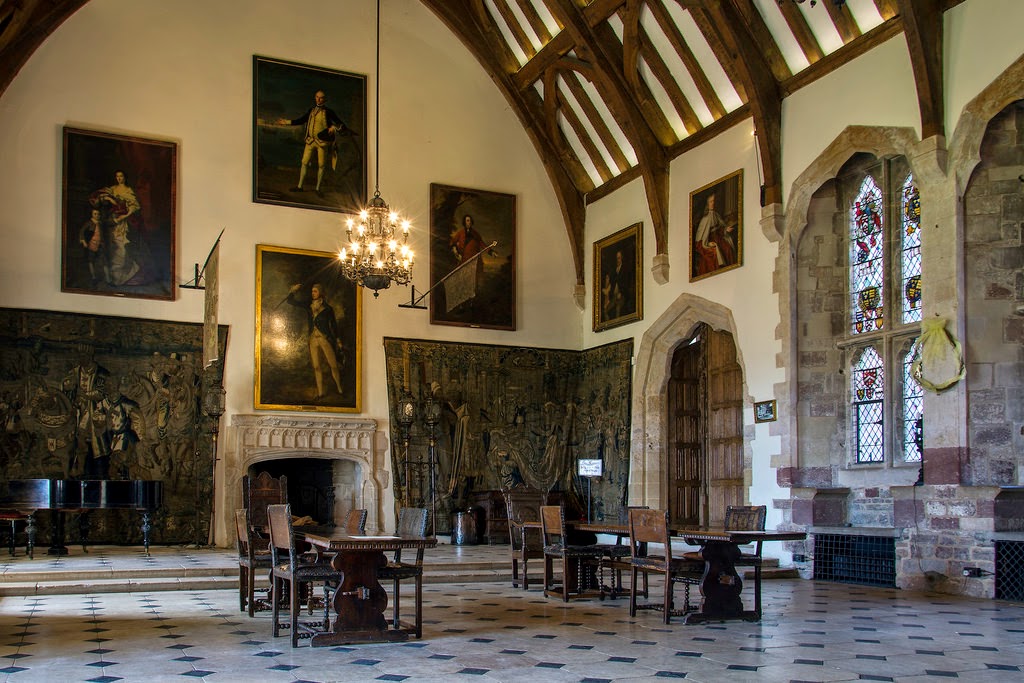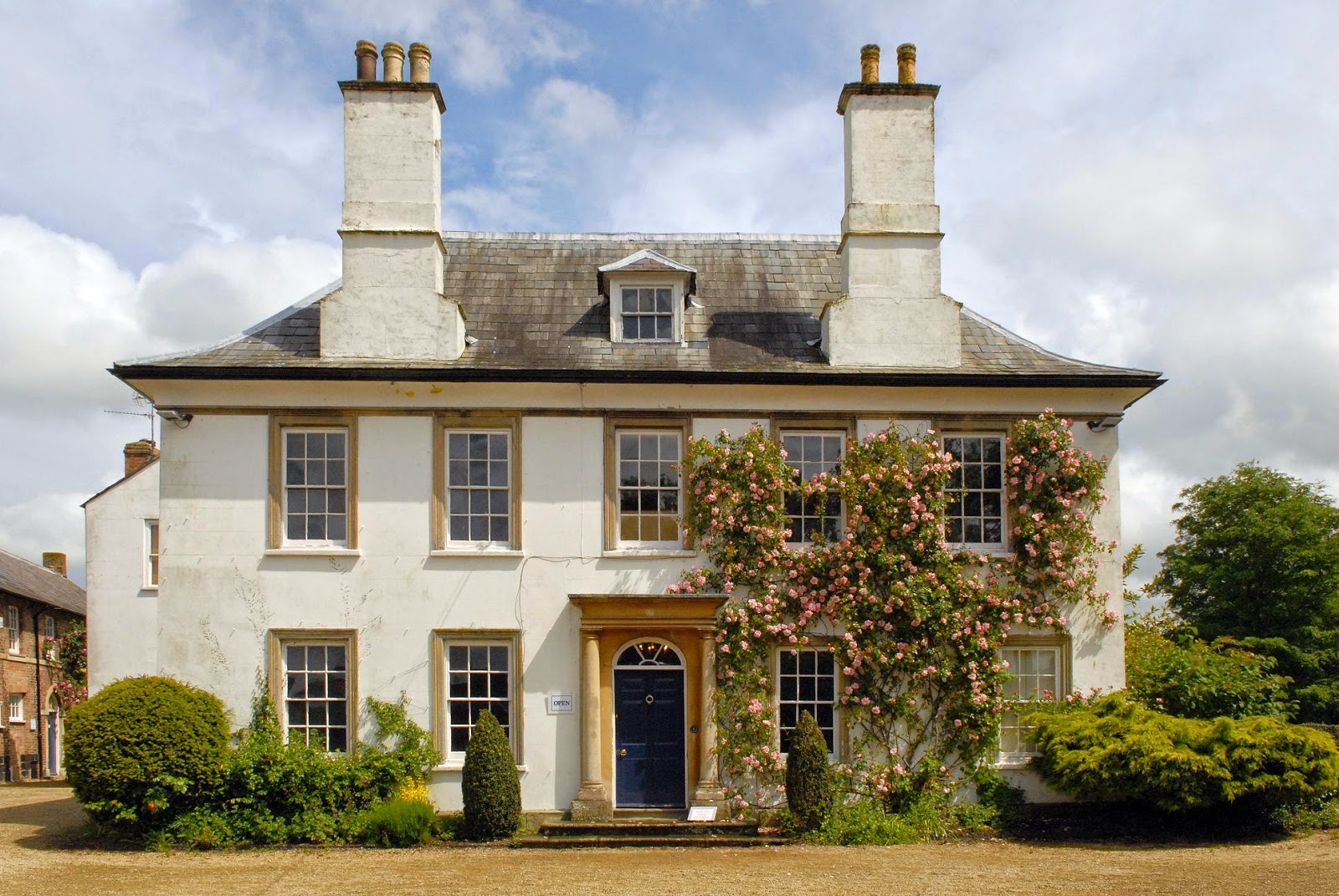
Heritage Tour: Stroud and Berkeley Castle
31st May 2015
8.00am
Northwich Memorial Court
Chesterway
Northwich
Cheshire
CW9 5QJ
£26.00
Stroud and Berkeley Castle
Sunday 31 May
8.00am (a) from Northwich
Other pick-up points available - details and booking conditions here.
£26.00
Encircled by five sweeping valleys opening out to the River Severn and made famous by Laurie Lee’s novel “Cider with Rosie”, the scenery is dramatic around Stroud. The town has attracted and inspired artists for over a century – Victorian designer William Morris to twenty first century art superstars, Damien Hirst and Dan Chadwick.
 The Museum in the Park is set in the beautiful grounds of Stratford Park. Situated in a Grade II listed 17th Century wool merchant’s mansion house, the collection tells the fascinating story of the Stroud District’s rich and diverse history. With over 4,000 objects on display, including dinosaur bones, historical paintings and even one of the world’s first lawnmowers, there is something to spark the interest of all visitors! The special exhibition is The Friction Project: a Miniature Museum of Museums. Produced by Flow Contemporary Arts, the project presents a unique interactive artwork created by Tara Downs and Bart Sabel inspired by the collections of three Gloucestershire Museums.
The Museum in the Park is set in the beautiful grounds of Stratford Park. Situated in a Grade II listed 17th Century wool merchant’s mansion house, the collection tells the fascinating story of the Stroud District’s rich and diverse history. With over 4,000 objects on display, including dinosaur bones, historical paintings and even one of the world’s first lawnmowers, there is something to spark the interest of all visitors! The special exhibition is The Friction Project: a Miniature Museum of Museums. Produced by Flow Contemporary Arts, the project presents a unique interactive artwork created by Tara Downs and Bart Sabel inspired by the collections of three Gloucestershire Museums.
After lunch we visit Berkeley Castle. The most remarkable thing about the Castle is that for nine centuries, the building, the Berkeley family, the archives (which go back to the 12th Century), the contents, the estate and the town have all survived together. Its place in history is significant, not just because it is still intact, but because the Berkeley family and their home have played an important part in the power struggles of so many centuries.
 The Castle is one of the March Castles, built to keep out the Welsh. It has all the trappings to match: trip steps designed to make the enemy stumble during an assault, arrow slits, murder holes, enormous barred doors, slots where the portcullis once fell, and worn stones where sentries stood guard. It is also a fairytale Castle with its warm pink stone that glows in soft sunset light. Outside, the battlements drop some 60' to the Great Lawn below; but inside the Inner Courtyard, the building is on a human scale, with uneven battlements, small towers, doors and windows of every shape and size. The surrounding land would have been flooded for defence.
The Castle is one of the March Castles, built to keep out the Welsh. It has all the trappings to match: trip steps designed to make the enemy stumble during an assault, arrow slits, murder holes, enormous barred doors, slots where the portcullis once fell, and worn stones where sentries stood guard. It is also a fairytale Castle with its warm pink stone that glows in soft sunset light. Outside, the battlements drop some 60' to the Great Lawn below; but inside the Inner Courtyard, the building is on a human scale, with uneven battlements, small towers, doors and windows of every shape and size. The surrounding land would have been flooded for defence.
 The Family are one of only three families in England who can trace their ancestry from father to son back to Saxon times. English history has been lived out within these walls - and by this family. The Castle is the oldest building in the country to be inhabited by the same family who built it. For centuries, the Berkeleys were close to the throne, able administrators and fighters who supported their king or queen (as long as they could), backed the winning side, and married well. The Castle, naturally enough, is full of stories. The archives, which are still housed in the Castle, date from 1154. They comprise around 25,000 documents relating to the estate, of which about 6,000 date from before 1490.
The Family are one of only three families in England who can trace their ancestry from father to son back to Saxon times. English history has been lived out within these walls - and by this family. The Castle is the oldest building in the country to be inhabited by the same family who built it. For centuries, the Berkeleys were close to the throne, able administrators and fighters who supported their king or queen (as long as they could), backed the winning side, and married well. The Castle, naturally enough, is full of stories. The archives, which are still housed in the Castle, date from 1154. They comprise around 25,000 documents relating to the estate, of which about 6,000 date from before 1490.
The contents of the Castle are items that have been chosen, collected and treasured by members of the Berkeley family throughout the centuries, and many reflect the history of the place. They include Francis Drake's cabin chest, Queen Elizabeth I's bedspread, and the banner that the 4th Earl of Berkeley took with him to the Battle of Culloden. Many of the unusual tapestries, paintings, ceramics and silverware, have their own story to tell.
 Edward II was reputedly murdered there on September 21, 1327 by unknown means, although popular stories of a red hot poker or suffocation persist. The cell where he is supposed to have been imprisoned and murdered can still be seen, along with the adjacent deep dungeon, which supposedly echoes the events of the murder every year on September 21.
Edward II was reputedly murdered there on September 21, 1327 by unknown means, although popular stories of a red hot poker or suffocation persist. The cell where he is supposed to have been imprisoned and murdered can still be seen, along with the adjacent deep dungeon, which supposedly echoes the events of the murder every year on September 21.
 The Castle is surrounded by eight acres of landscaped gardens, including Queen Elizabeth I’s bowling green, sweeping lawns, terraced gardens and the 8th Earl’s swimming pool – now an ornamental lily pond with plume fountain. Enjoy the fabulous collections of roses and magnolias, the magnificent scented borders and a huge range of specialist plants collected by the Berkeley family since the gardens were created in the mid seventeenth century. The grounds also include a Butterfly House with hundreds of butterflies flying freely in a tranquil indoor garden, and a Walled Garden.
The Castle is surrounded by eight acres of landscaped gardens, including Queen Elizabeth I’s bowling green, sweeping lawns, terraced gardens and the 8th Earl’s swimming pool – now an ornamental lily pond with plume fountain. Enjoy the fabulous collections of roses and magnolias, the magnificent scented borders and a huge range of specialist plants collected by the Berkeley family since the gardens were created in the mid seventeenth century. The grounds also include a Butterfly House with hundreds of butterflies flying freely in a tranquil indoor garden, and a Walled Garden.
A few minutes walk from the Castle is the village of Berkeley, where you can visit the house of Dr Edward Jenner, the vaccination pioneer. Smallpox was the most feared and greatest killer of Jenner's time. It killed 10% of the population, rising to 20% in towns and cities where infection spread easily. Among children, it accounted for one in three of all deaths. From the early days of his career, Edward Jenner had been intrigued by country-lore which said that people who caught cowpox from their cows could not catch smallpox. Jenner observed this in his local area. These observations led him to investigate and experiment using cowpox as a means to prevent catching smallpox.
 St Mary's Church in the village contains the tombs of the Berkeley family.
St Mary's Church in the village contains the tombs of the Berkeley family.
Berkeley Castle 2015 Brochure here.
Stroud Town Map here.
Development of the Arts in Northwich | Contact Us
We use cookies on our website to help us give you the best experience on our website.
Our cookies have now been set in your browser, and we�ll assume you�re happy with this if you keep using our website.



